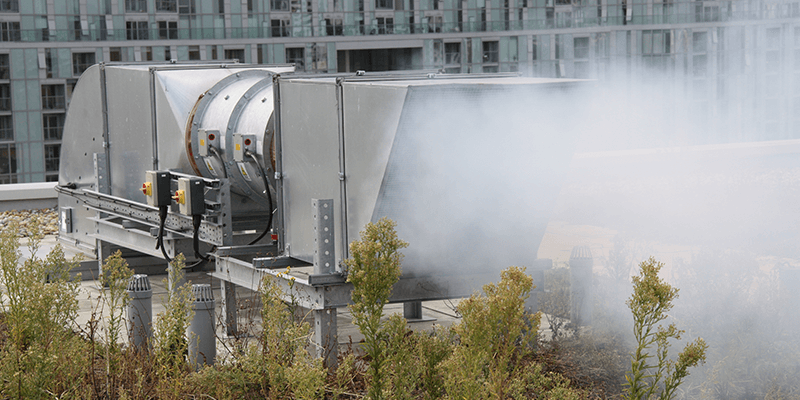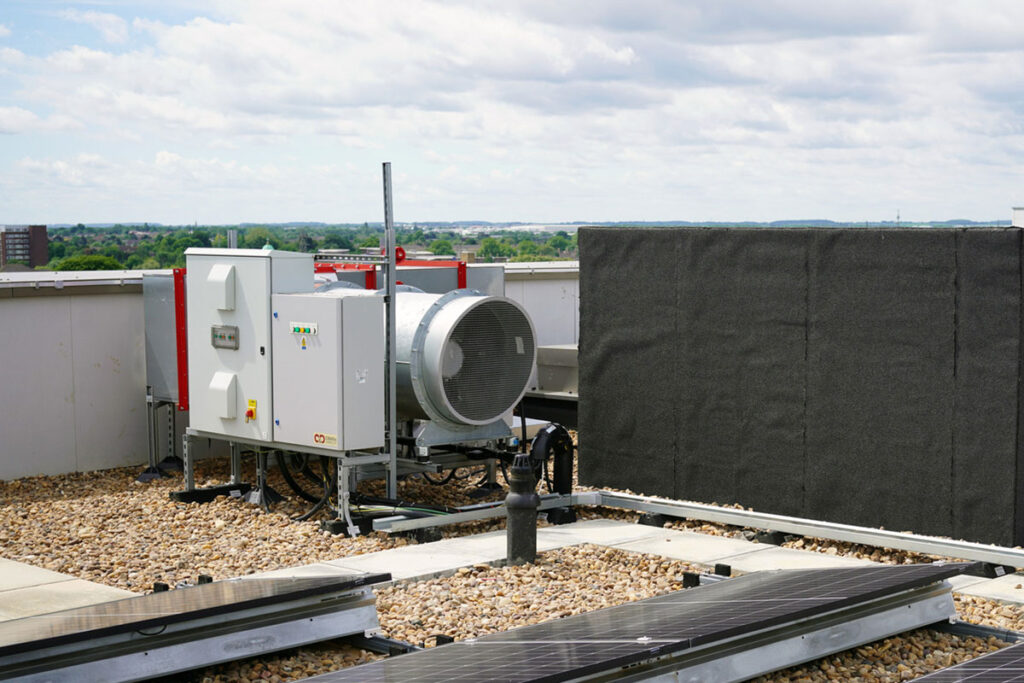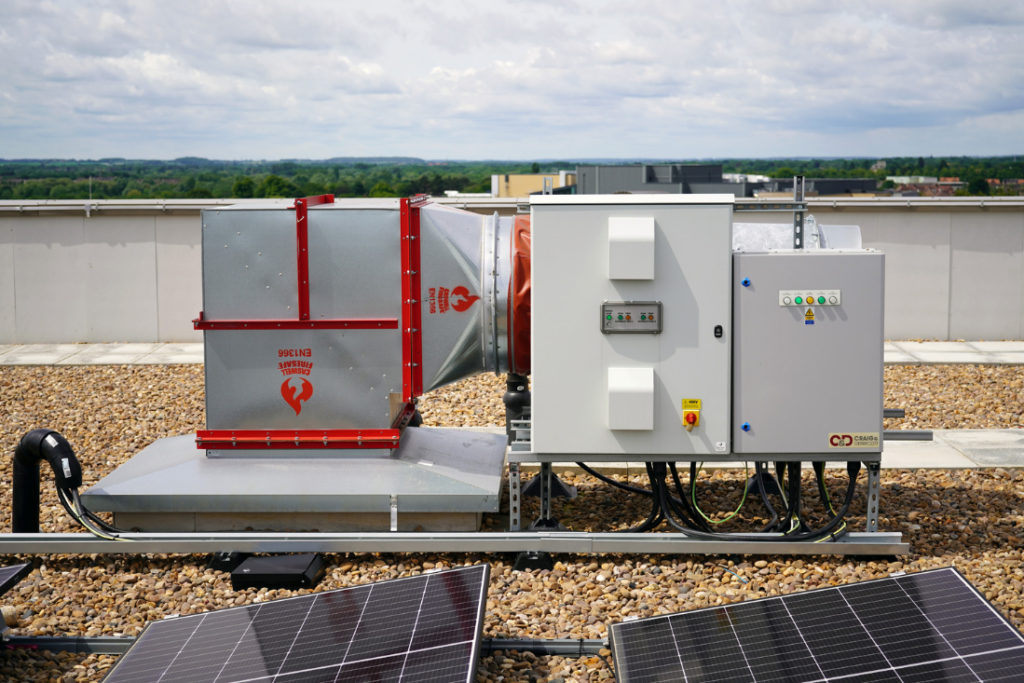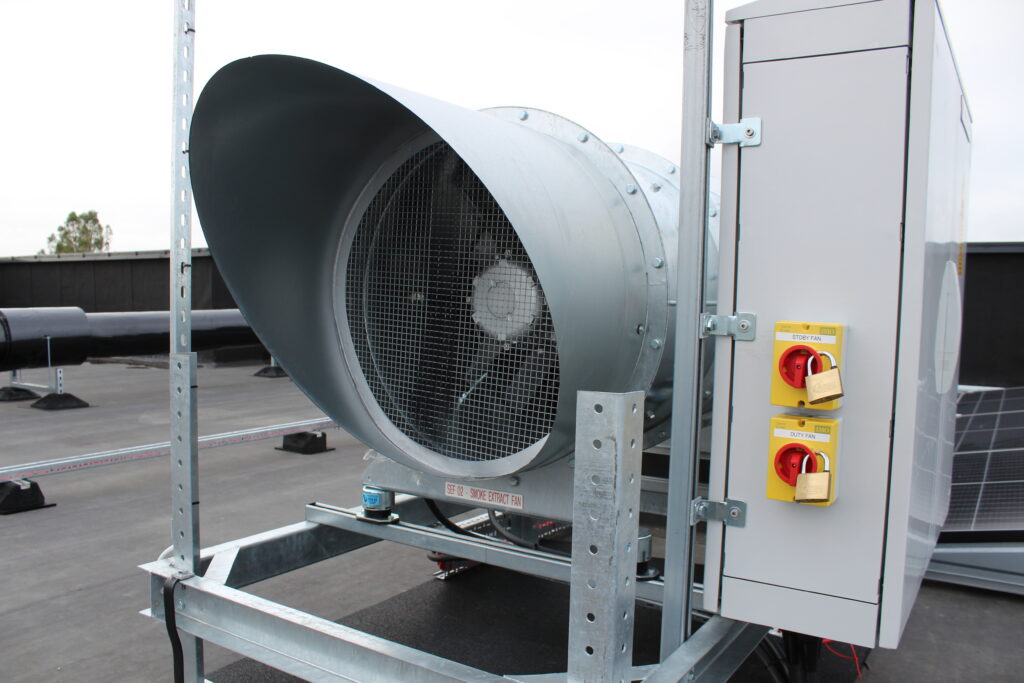In modern building design, particularly for high-rise and large complex structures, the safety and efficiency of smoke control systems are paramount.
Among the most critical yet often misunderstood influences on these systems is the stack effect and wind pressure. These environmental forces play a significant role in determining how smoke moves through a building during a fire.
At FDS Contracting, we integrate a deep understanding of these phenomena into every smoke control solution we design and develop.
What is Stack Effect?
Stack Effect is a natural movement of air within a building driven by differences in indoor and outdoor temperature. In winter, warm air inside rises and escapes through upper levels, drawing in cooler air from the lower levels. In summer, the reverse may happen, although to a lesser degree.
In tall buildings, this effect can become especially pronounced due to the increased pressure difference between the top and bottom floors.
During a fire, the stack effect can significantly influence how smoke travels, potentially allowing it to spread vertically at speed if not properly contained.
The Role of Wind Impact
Wind is another major factor affecting airflow and smoke movement. Wind hitting the exterior of a building creates areas of positive and negative pressure.
This can force air (and smoke) into the building on the windward side and pull it out on the leeward side. When doors, windows or ventilation openings align with these pressure zones, the airflow can exacerbate smoke spread both vertically and horizontally.
If not accounted for, wind can render otherwise well-designed smoke control systems ineffective. In extreme cases, it can even reverse intended airflow patterns, jeopardising means of escape and the safety of fire-fighting personnel.
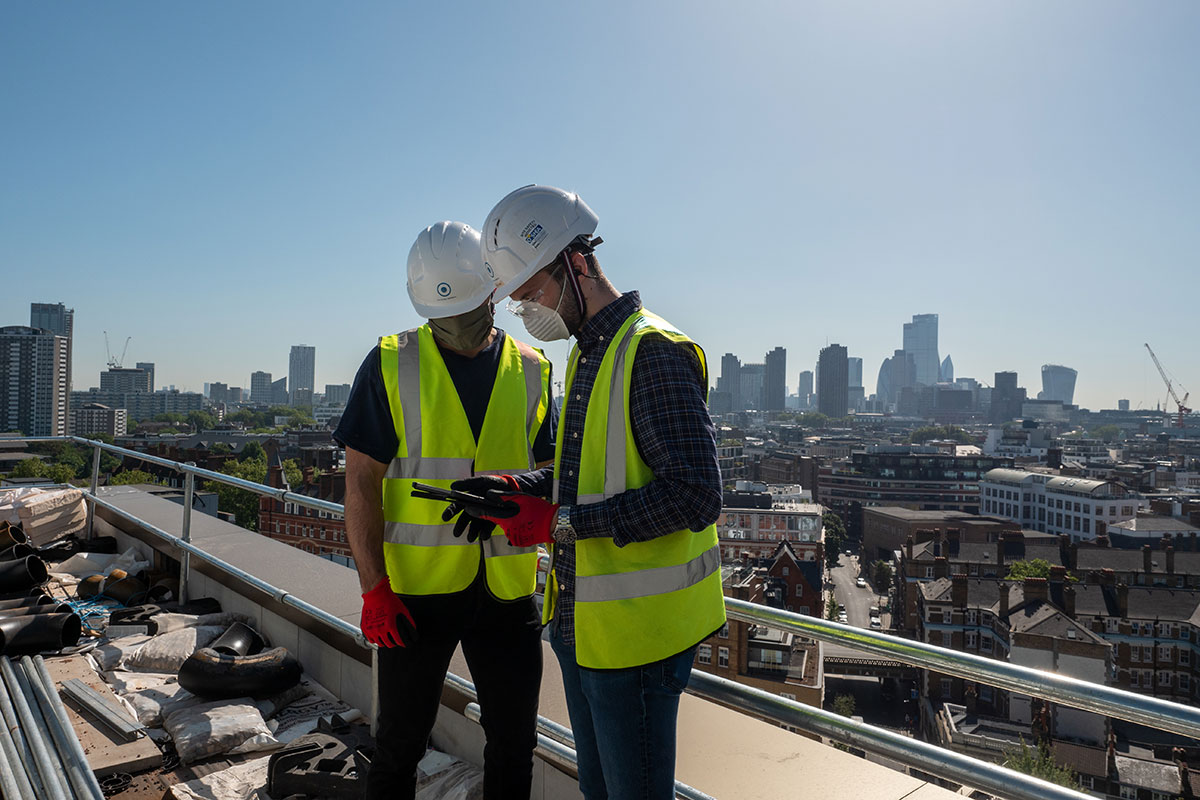
Implications for Smoke Control Design
Stack effect and wind pressure can both compromise smoke containment strategies.
For instance:
- Smoke shafts may become ineffective if air is unintentionally drawn through them due to temperature-induced pressure differences.
- Pressurisation systems may fail to maintain a safe refuge if external wind pressures exceed expectations.
- Natural ventilation systems might behave unpredictably in high winds, especially on upper floors.
For this reason, smoke control systems must be designed with a detailed understanding of building physics, environmental conditions and pressure dynamics.
How FDS Contracting Approaches the Challenge
At FDS Contracting, we take a comprehensive and bespoke approach to each project. Our design process considers the full range of dynamic influences, including stack effect and prevailing wind conditions, from the concept stage onwards.
Our Method Includes:
Computational Fluid Dynamics (CFD) Modelling:
We simulate airflow and smoke movement under various scenarios, including seasonal temperature changes and prevailing wind conditions.
Pressure Profiling:
We analyse the vertical pressure distribution in high-rise buildings to determine where stack effect will be most pronounced.
System Testing and Validation:
Our systems are tested to ensure performance under both normal and worst-case conditions. This includes pressure testing and fan commissioning.
Smart Control Systems:
Where applicable, we install intelligent systems that adjust fan speed and damper settings in real time to counteract unexpected changes in wind or internal pressure.
Our solutions are compliant with Approved Document B and BS EN 12101, but more importantly, they are designed to perform reliably when it matters most.
Why It Matters
In a fire emergency, every second counts. An effective smoke control system not only helps protect property but, more importantly, provides vital time for occupants to escape and for emergency services to respond.
Ignoring or underestimating the impact of the stack effect and wind can undermine this critical function.
At FDS Contracting, we do not take that risk. Our understanding of building aerodynamics ensures that we design systems that work in the real world, not just on paper.
Speak to the Experts
Whether you are in the early design phase or reviewing an existing system, FDS Contracting can help you assess the impact of stack effect and wind on your smoke control strategy.
Contact us today to learn how we can help ensure the safety and compliance of your project.
